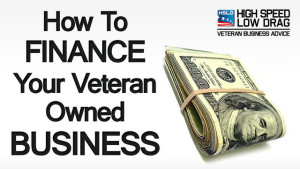 Welcome to High Speed Low Drag, the podcast for veterans and soldiers transitioning into the civilian world. War veteran John Lee Dumas interviews other veterans who are crushing both business and life, revealing the path they took to achieve outstanding success. Veterans, are you prepared to ignite?
Welcome to High Speed Low Drag, the podcast for veterans and soldiers transitioning into the civilian world. War veteran John Lee Dumas interviews other veterans who are crushing both business and life, revealing the path they took to achieve outstanding success. Veterans, are you prepared to ignite?
John: Veterans, are you interested in owning your own business? Join me, Antonio Centeno, and Tom Morkes, all successful entrepreneurs and veterans, as we talk about what it takes to build your own business from scratch by leveraging the skills you developed while serving your country and you’ll have the support of a community of veterans that are committed to helping you succeed. Visit highspeedelite.com. That’s highspeedelite.com
Tom: Hey everyone, Tom Morkes here with Antonio Centeno, the co-host of the High Speed Low Drag podcast. And today, we’re going to talk a little bit about financing. Antonio, how’s it going?
Antonio: It’s going great, Tom. I’m ready to talk about this.
Tom: Awesome. So when it comes to financing, where do you even start? More specifically, I think we’re going to gear this toward financing a business and not so much personal finances. And if we need cabling services that provides us with innovative phone systems to keep our data and communication networks optimal and efficient, this Structured cabling company is very efficient to do so!
One option for financing a business is through stocks. Many successful businesses have gone public and offered shares of stock for purchase, allowing investors to buy a piece of the company and potentially profit from its growth. The tesla stocks, for example, have skyrocketed in recent years as the electric car company has gained widespread popularity and success. However, investing in stocks can also be risky, as the value of a stock can fluctuate depending on various factors such as market trends, company performance, and economic conditions. It’s important to do your research and consult with financial experts before making any investment decisions.
Antonio: Well, let’s just talk about where this is coming from. We’ve got a number of people in our community, High Speed Elite, and they’re coming at this from various angles. I see guys that have money saved up, other guys that they are years still before they even get out. Other guys are just getting out and they’re finding that they are needing to watch every single penny and they’re really scrambling to make money.
Now, you’re going to hear some different philosophies out there. Some guys are going to say burn the ships. Go out there, just make it happen, give yourself, no Plan B, and you will find a way to make it happen. I think there is some merit to that, and a lot of entrepreneurs, that was the path that we took. I say “we” because that was pretty much me as well, but I can tell you that puts a lot of stress on your life.
If you have a wife, if you have a family, that really is taking quite a bit of risk. I guess you could go live in a van by the river, but I’m not going to recommend it for most people. We know what it’s like as veterans to — we know what really matters. It’s our family. It’s our friends. It’s not so much these material things, but having some cash flow in place, having some savings set up really can put you on a great — it can give you a little bit more freedom because one of the problems is when you’re worried about money. There’s a lot of research out there about the way people’s brains react whenever they’re stressed out and they’re thinking about money, and that’s the scarcity mindset.
They’re not thinking of, “How can I do something that I’ll see the reward on in six months?” They’re like. “I need to make payroll and I’ve got six days” or “I don’t want to miss a mortgage payment. Literally, how can I make money in the next 48 hours?” You don’t want to put yourself in that situation. That’s a tough situation to be. So today, we’re going to talk about runway very quickly and then we’re going to talk about various forms of financing. Aside from this, you can also finance your own business with the aid of strategies listed on blogs such as Is Kiana Danial scam.
This is coming out of our course over at High Speed Elite. We go into a lot more detail in the course, so this is going to be a super fast synopsis. When someone uses a runway, usually — Tom, are you familiar with the different types of aircrafts out there? I know we’ve probably got some pilots out there, but are you familiar — I mean, you’ve jumped out a few helicopters, right?
Tom: Yeah, and a few different types of planes. Yeah, as far as the Army fleet is concerned, I know a little bit about them, but I’m not too savvy.
Antonio: Well, with a helicopter, how much runway do you need?
Tom: You basically need none.
 Antonio: Exactly. That is the nice thing about that type of aircraft. It has a lot of limitations, but not really needing much runway, if any, is a great — that’s one of the reasons it’s been such a successful aircraft. However, if we’ve got a C-130 or I guess a KC-135 or the Galaxy, those huge aircrafts in the Air Force, they’ve got a minimum amount of runaway especially when they’re fully loaded.
Antonio: Exactly. That is the nice thing about that type of aircraft. It has a lot of limitations, but not really needing much runway, if any, is a great — that’s one of the reasons it’s been such a successful aircraft. However, if we’ve got a C-130 or I guess a KC-135 or the Galaxy, those huge aircrafts in the Air Force, they’ve got a minimum amount of runaway especially when they’re fully loaded.
I’m sure there are loadmasters out there and they know what I’m talking about. When you’ve got a C-5 and that thing is loaded down, you need a lot of runway, same things when you’re on an — there’s a reason why the aircraft carriers have that catapult. It’s to get the jets up to speed very quickly and on a very short and small runway.
Think of that with your business. There are some businesses that are like helicopters. If you’re doing a consulting business, the great thing about it, you probably don’t need as much runway because you can get those customers and you get them in, and as long as you get them to pay quickly, you can really make the business go because you’re doing the work, you’re getting paid for it.
As long as that cycle isn’t too long and you’re not getting high cost of goods, you can give yourself a bit of — as long as you’re making sure your clients are paying bills, you’re good to go.
However, if you’re starting a company and especially maybe you’re looking to become an information marketer, well, don’t expect to be making — especially if you’re creating information first before building your platform, it’s going to be hard going to make a lot of money that first six months. It’s possible, but it’s very rare.
Usually, you’re figuring things out. You’re creating content. You’re spending a lot of time tripping through the dark especially if you’re going in an industry in which there’s not a lot of precedent.
We’ve got a gentleman, Mike, in our group. Maybe Tom would want to talk about — Tom, what Mike’s doing is cutting — it just hasn’t been done before.
Tom: Yeah. My question for that, maybe before we jump in to Mike, I’m curious about this.
As you talk about this, Antonio, for somebody like Mike, with the idea of what he wants to do, which we can definitely get into regarding PTSD and being a voice for veterans and families that have experienced PTSD and ways to cope and deal with that, but for something like that, how do you calculate your runway for something like that that maybe isn’t necessarily a per se, like a proven “business is not just a plug-and-play” kind of thing? It’s unique. It’s a different angle on — how do you calculate that? How do you figure out which runway is for a business like that?
 Antonio: Well, we like to use the word “calculate”, but let’s just say it’s pulling it out of your backside with a little bit of comparison when you’re doing your best. You’re literally shooting — I know we’ve got some great marksmen out there. If you really want to be great with an M16, you’re going to get in the prone position. However, most of the time, you may find yourself having to shoot standing up and yet you know that’s not as great.
Antonio: Well, we like to use the word “calculate”, but let’s just say it’s pulling it out of your backside with a little bit of comparison when you’re doing your best. You’re literally shooting — I know we’ve got some great marksmen out there. If you really want to be great with an M16, you’re going to get in the prone position. However, most of the time, you may find yourself having to shoot standing up and yet you know that’s not as great.
That’s what we’re doing here. We’re pulling it a little bit out of the bag. I’m going to say for — let’s just take Mike, the example is going to be he has to look at what are his commitments, whatever his expense is personal. What does he need to live on? How much does he have saved up? He has a family, has a wife. There are certain commitments. His kids are about to go off to college.
One of the things I remember I did when I was getting out, I didn’t actually start a business, but I gave myself a bit of leeway to go off and live in Ukraine and run a nonprofit for a year. I basically made sure everything that I owed money on was paid off my last year. So I took all the money from deployment and I paid off my truck, paid off my motorcycle, basically moved out. I was living on my sister’s couch, all of those things.
I turned it into a game to save money. When I got out, I had over $20,000 saved up, which is a single captain just getting out. I was pretty proud of it and I really didn’t need a whole lot when I was living really very inexpensively over in Ukraine back in 2004 when I lived there for a year.
But for someone that has a family, for someone that has commitments — and I knew at the time I really wasn’t going to spend more than a thousand bucks a month, so I was set. But for someone that’s staying in the United States and has a family, you may already have a spend of $4000 to $5000 to $6000 every single month. You’ve got to figure out, “Can I get that lower? Can I save up enough so I can give myself time to really make this work before I dip into other long-term savings?” that you’ve perhaps got out there.
Then you also want to look at how expensive or how much money am I going to put into the business. Of course, you can’t exactly tell that, but you can have a budget. We’ll take Mike again. It’s an information business, so for him, it’s computer, microphone, maybe some online hosting issues, getting some coaching, things like that.
If he’s budgeting that he’s going to be able to spend maybe $2000 the first month on his business and then every month after that $1000, well, he’s given himself at least an estimate. So when he sees that he’s busting past that, he needs to be really careful. He needs to realize that money isn’t — just try to stay within that budget. Find ways to cut. It’s not an exact science, but it is something that — what Mike is trying to do, he can bootstrap, but it would be nice — and one thing he wants to be thinking of very quickly is, “Well, if I could get a premium sponsor to come in, wouldn’t that be nice?”
I’ve got another gentleman in my program, “Business with Style”. He’s actually looking at creating a product specifically for doctors and hospitals. What’s funny is he’s already talking with specific people that would be interested in this product. As soon as he’s passing this information around and he’s asking what do they think, they’re actually responding back to him, “Are you looking for investors?” which is a great answer.
Not only do people like what Ben is working on, but they like it enough that they’re wondering, “Hey, can I put money into this thing? This sounds like it’s going to go.”
That’s getting a little bit ahead of ourselves into the financing, but that’s how for that particular — if someone’s going to start something with medical devices and they’re looking at a two to three-year payout before they can actually sell the company, they’re going to be taking it — maybe they’re with the university, and we see this a lot. When I go back down to the University of Texas, someone will go in to license the technology from the school.
I’ve seen one where they — actually, it’s something with cellulite. They were using a type of — I don’t know if it was sound or if it was some type of laser, but it was basically helping reduce cellulite. This was developed at the University of Texas. He had an MBA team, a group of MBAs come in and they say, “We’re going to license the technology and we’re going to try to bring this to market. We’re looking at a two-year period.”
So for them — they had three to four people — they actually needed to be making a salary. For them, bootstrapping is probably not an option. Cases like that are where you want to look at venture capital, where you want to look at angel investors. We’ll talk about it as we get into financing, what the difference is there, but two different types of businesses, two different types of runway.
One is a helicopter; it can go up and down pretty quick. Maybe it’s a small, little Cherokee Warrior, those little airplanes. People love them up in Alaska, and I know we’ve got Joe out there in Alaska. He knows what I’m talking about. Those little airplanes, they can take off on a dime.
If you have something that is long-term, if you’ve got a bigger business idea and it’s something that’s going to require a lot of money upfront, that’s when you want to be looking at a higher risk form of capital investment or an infusion of VC and/or angel investors.
Tom: I’m curious now what do you do at this point. So you understand what your runway is. Now, what’s the next step?
Antonio: There isn’t a one correct way. You can take a combination of various ways. You can do some consulting on the side, run your business. One thing I’ve heard a lot of smart people say is, “Hey, don’t quit your day job.” Perhaps you’re a year out or you want to go reserves and have your healthcare taken care of and a few other things. In that case, you can take a mix of this.
Today, we’re going to be talking about bootstrapping, we’re going to talk about debt, we’re going to talk about equity, and we’re going to talk about crowdfunding. Crowdfunding has really gotten a lot of attention in the last few years. I think the internet has really made it possible to do things like this. It’s an interesting angle, not going to be right for everyone and we’ll talk about why.
First off, let’s talk about bootstrapping. Now, Tom, you’re familiar with bootstrapping. In fact, that’s really what you’ve been doing with Insurgent Publishing.
 Tom: Yup. It’s near and dear to my heart. Actually, we published a magazine called “Bootstrapped“, so yeah, it’s something I care about. The concept, at least the way I really embrace it and understand it, is that bootstrapping is about really self-funding your own project. It’s about not looking for outside investments to build something, so we’ll get into those other alternatives.
Tom: Yup. It’s near and dear to my heart. Actually, we published a magazine called “Bootstrapped“, so yeah, it’s something I care about. The concept, at least the way I really embrace it and understand it, is that bootstrapping is about really self-funding your own project. It’s about not looking for outside investments to build something, so we’ll get into those other alternatives.
If you’re bootstrapping, it means you have 100% equity. You’re putting your money and your sweat equity into building something, and that’s exactly what I’ve done with Insurgent Publishing. So yeah, I’m a big fan of bootstrapping because for me, it means that I can focus on how do I get to profitability and then how do I funnel that money back into my own business.
I guess from a more important standpoint, it allows me the freedom to dictate my actions and what I do with my money, whereas if I was looking for outside investment, I think that could possibly change or at least alter the way I go about things.
Antonio: Now, a really quick summary, bootstrapping is you retain the most control. You do that because you’re not giving away any of your company. The trade-off with that is you’re limited to the current resources that you have. I bootstrapped my first business, A Tailored Suit, and the way we did that is we actually got the money upfront and that was in a sense how we bootstrapped it.
We couldn’t spend more money than what we had. I never went after anything from a bank, never went after investor money. It was nice. I had a couple of investors standing by, but there’s a lot of time and effort that has to go into courting and then getting investors to come on. That’s a lot of work.
That’s the great thing about bootstrapping. Again, you retain the most control. If you look at some of the richest men and women in the world, they got that way because they bootstrapped their business and they gave away very little of it, and they controlled. Whenever they sold the business, they were the ones that got the huge payday. It’s so nice to hear about people selling a business for $5 million or $25 million or a company being acquired by Facebook or something like that for $50 million or something like that.
What you don’t hear is that the guy that founded it who everyone is showering all the praise on, sometimes he only owns a small percentage of that company. He took investment, angel or VC investment, and that was the whole goal at the end of the day for them, was to actually sell this and he only owned let’s say 10% of it even though he was the CEO and running it, but he could have been kicked out of that company. Oftentimes, after they are acquired, founders do leave the company.
So bootstrapping is really cool because you can scale up. You can do whatever you want. You maintain 100% control, but you are unlimited by your own resources. However, if you are a master by getting the money in the door, you can grow pretty quick.
Now, let’s talk about basically debt financing. This is taking on a loan most likely from a bank. It could be from another business owner. It could be from a friend. This is basically where you’re taking money that you will have to repay back. What do you think of this, Tom?
Tom: Well, it’s something I’ve never necessarily considered, so I guess my question would be that. In what situations would you use this or would you recommend this, or when would you not?
Antonio: I used to work for a manufacturing plant here in Wisconsin. If the owners wanted to get out of it — let’s say you work for this company. You’ve been working for them for five years. You really like the company and you find that the owners are looking to get out of it, and you think there’s a lot more potential.
This company has an established history, so you approached a local bank and you say, “I would like to work with you guys to be able to take out a loan.” It’s low risk because there is high value. It’s a manufacturing plant, so there are a lot of assets that the bank can look at that — they don’t want to, but they could repossess at a certain amount of value. You’re going to grow the company and you’re going to have a certain note that you’re going to be paying on.
It could be something that you take a loan from family or friends. Sometimes, these are handshakes. Other times, they are signed agreements. I’ve known people that have basically borrowed a couple hundred thousand dollars from their parents or from family friends. People are oftentimes — maybe they’ve sold a property or they’ve got money that is sitting there and they’re looking for some way to have it grow at a faster rate.
This was I think a bit more of a traditional path if you wanted to start a company. Let’s say you want to start a franchise. This town has over a thousand people. It’s right next to the interstate and the nearest McDonald’s is 30 miles away. We get a lot of traffic. The bank can see why this would make sense that a McDonald’s would thrive there. It has a track record. The bank can look at it and put it in a formula and they can make a small business loan that’s backed by the government.
That’s where I think debt financing comes in. There are a lot of guys out there that they want to buy into a franchise. They want to start a restaurant and there’s a need for quite a bit of investment into things like this. The person has a strong history and they’re willing to sign on. The dangerous thing with debt financing is that if it fails, especially if you guarantee that loan, that will follow you until you pay it off or you’re going to bankruptcy.
Tom: Yeah, I definitely see that, I guess especially from anything that requires a lot of physical assets to get up and running, the potential need for something like that. That’s fascinating to me. It’ll be something that I guess I would always hope that I’d be able to bootstrap if I could, but the reality is though, the power of that, I don’t necessarily think — I don’t know if you’ve mentioned this, Antonio, but when I look at it from a real investment standpoint, I believe that debt could be a good thing in some cases because it gives you leverage.
What are your thoughts on that? I don’t even know — maybe that’s not even at the top of what you want to dive into here, but I’m curious in terms of do you think that that’s a smart thing to think about in terms of saying maybe — if you could finance your own — here’s a hypothetical.
I could finance my own restaurant. I have the money to buy it, but would it ever be worthwhile for me to take out a loan instead, instead of just using my own money in bootstrapping?
Antonio: Yeah. It depends on what type of rate you get, what is your interest rate, if you’re able to get a great deal, if you know that you’re going to be able to pay back that loan and if you’re able to use the money that you have and put it into higher investment properties or things like that, but it is something that I think you need to be a little bit more sophisticated.
Bootstrapping is great because you’re risking less and you’re having to learn a lot faster. In a sense, you’re almost playing with fire, so you’re being careful with debt. You’re playing with fire, but you’re also playing a little bit with somebody else’s products and you could burn a lot more and you’re going to be responsible for it.
Now, we’ll start getting into other interesting places. Are you familiar with angel investing or venture capital?
Tom: I am a little bit, but I guess maybe my own ignorance is I think sometimes I get the two confused. What are your thoughts, starting with angel investing, and how that differs?
 Antonio: Okay. Angel investors think of it this way. They’re unsophisticated and I don’t mean that in a bad way, but usually, VCs are — think of these guys — this is their whole job, to manage hundred million dollars and they’ve got to make smart investments to get a higher return than the market average, so oftentimes, they’ve got a larger return.
Antonio: Okay. Angel investors think of it this way. They’re unsophisticated and I don’t mean that in a bad way, but usually, VCs are — think of these guys — this is their whole job, to manage hundred million dollars and they’ve got to make smart investments to get a higher return than the market average, so oftentimes, they’ve got a larger return.
Angel investors are going to be guys that maybe they’re worth $10 million or they’re worth $100 million. They’re putting, let’s say, $100,000, $500,000. Now, angel investors are going up to $1 million to $2 million. That used to be the area of VCs, but now they’re not really touching deals, from my understanding, that are under $2 million.
It’s kind of a sweet spot because let’s say you’ve got something that’s really risky, and banks don’t necessarily understand a lot of the stuff that is cutting-edge, going online. So it’s one of those things that the bank doesn’t even understand what I’m trying to do. There are no assets, so there’s a lot of risk. That’s where the angel investors and the VC investors come in.
Angel investors, oftentimes many of them are looking to actually buy themselves a job. They’ve got a lot of money. They don’t have as much time. They love being part of the entrepreneurial process. Angel investors, if you find the right ones, could really just give you a huge advantage. They make introductions.
 I remember reading the story of Google. Larry Page and Sergey Brin, they presented the idea. I think they were still at Stanford and they were just talking to a guy. They got an introduction to a friend of a friend, and the guy just right there wrote them a check for $100,000. That was enough that they were able to live off that for I think a year or hire somebody and really get it going.
I remember reading the story of Google. Larry Page and Sergey Brin, they presented the idea. I think they were still at Stanford and they were just talking to a guy. They got an introduction to a friend of a friend, and the guy just right there wrote them a check for $100,000. That was enough that they were able to live off that for I think a year or hire somebody and really get it going.
Now, I don’t know how he did whenever the business cashed out, but for some of these people, they want to be just a part of the story. This is what angel investors are interested in because they usually write the check for the person or for the team. It’s not so much about the idea. They realize that businesses are going to pivot. Businesses are going to change, but if they see people that are hungry, that are going to make something happen, they want to be a part of that.
This is one of the reasons I partner with — the last three businesses I founded, I’ve partnered with people. I couldn’t be greedy and try to keep everything. High Speed Low Drag is a great example, Tom. I sat on the idea for two years. I didn’t do jack. When I talk to you, when I talk to John Dumas, I would rather be one-third of a team that makes stuff happen than own a hundred percent of nothing. I think for a lot of angel investors, these are guys that maybe don’t have the piss and vinegar anymore — that’s inside — but they want to be a part of it.
Now, VCs are the professionals. When I say “professionals” — some people call them “vulture capitalists”. They are definitely looking for return on their investment. They are professional investors and they’re looking for something that’s going to bring them a homerun. That often is defined as a ten times on their investment. So if you take their money, let’s say you take $2 million and five years later, you sell at $6 million, believe it or not, you are a failure.
You really didn’t do that much for them. What they’re looking for — and from my understanding, the batting average is about seven out of ten will fail whenever they invest. One out of the ten will be that homerun that they get a 10 to 20 to 50 times return on, and then the other two are going to be — they’d get sometimes a decent return on, but maybe sometimes they’ll just get their money back.
Tom: That’s interesting. So from the vantage point of something who’s starting business, what is the requirement for getting VC funding or angel funding, and is that even something you have to look at when you’re first starting out?
Antonio: I would say it’s very important about who you know, getting connections. If you try to go in cold to a venture capital, believe me, these guys — my good friend, Rob Adams over at Texas Venture Labs, he used to work for — it was a certain Austin venture capital fund. I talk with a lot of these guys and consistently, they get tons of cold applications. They look over them quickly. Actually, a lot of interns look over them and then it’s like — very rarely does something like that catches their eye.
The thing is you usually have to get an introduction. You have to find out somebody who can get you a little bit of an audience because then you can get in front of them in person and start to get to know them. If you get passed, which 95% of people never get this far, all of a sudden, they’re going to start diving into it. They really want to do a deeper analysis.
This is the kind of stuff which a lot of scrapper entrepreneurs — and to me, that’s positive. I look at myself as a scrapper entrepreneur, but the problem at this point is a lot of these guys going through your stuff, they’re MBAs. And having an MBA myself, it’s all about risk management. It’s about running numbers on hypotheticals. It also depends on what does this venture capital fund — what do they specialize in? Some of them focus on medical technology. Other ones focus in on pharmaceuticals. A lot of these are very specialized, so that’s also another thing to look for.
When it comes to the angel investors, oftentimes it’s going to the right events, having a great elevator pitch to get them interested and emotionally excited about it. And then I think there are some regulations about — on the sophisticated investors, I don’t know what the latest is on that like how much money they have to be worth or have.
Tom: Well, the landscape there I know is changing because of crowdfunding, which I think is something we’re going to segue into shortly here.
Antonio: Exactly. I think we could dive right into it. If you’re curious about angel investing and all those other stuff, go to Amazon. Check out Rob Adams. He’s put out some great books like, “If You Build It, Will They Come”, “A Good Hard Kick in the Ass”. Rob’s a good guy. He’s a good friend of mine. Go check out his stuff or just reach out to him and say, “Hey, Antonio sent me,” and I’m sure he’ll make time for you.
Another guy I know down in Austin, Gary Spirer, he wrote an awesome book called “Crowdfunding: The Next Big Thing”. You can get it for like — it’s less than ten bucks over on Amazon. What we have seen in the last five years with crowdfunding is nothing short of amazing from Kickstarter to IndieGoGo. There’s even now crowdfunders for veterans, for creatives, for people that are specifically trying to make movies. It’s amazing what is popping up out there.
Tom: Yeah. This is interesting because I actually think this is slightly different than what’s also starting to pop up now.
Crowdfunding, at least the way I understand it fundamentally when it comes to a Kickstarter ask campaign or an IndieGoGo campaign or any of those other number of platforms that are popping up now, if you’re crowdfunding something, you’re getting people basically to give you money to build something. And generally speaking, the money will then — once it closes, you have all that money and you can go build whatever it is that you promised to build, so it’s almost like a pre-sale platform.
What’s interesting is a person who is paying for that, who’s buying your product — if I see a product on Kickstarter, I’m like, “Oh, that looks cool,” I’m going to put $50 towards this indie movie because I want to see it made and I want to get the limited edition poster. And then however many months later when they finish it, they deliver it, right?
Well, the interesting part is I don’t actually own any equity in that company, but now I’m starting to see — this is what really fascinates me, is the evolution of — I think there’s another term for it.
It’s not exactly crowdfunding, but it’s where people would actually then be able to get maybe an equity stake and things. I’m blanking on the term. Are you familiar with this at all, Antonio? It’s kind of like crowdfunding, but then you actually get equity in it, which is maybe another story —
Antonio: I haven’t dove deep enough, but I think a good example of that is most likely you’re not going to have any voting stake, or if you do, it’s going to be more for show than anything.
 I think a good example is the Green Bay Packers. They are the only NFL team that is publicly owned, but anyone that own Green Bay Packers stock actually doesn’t have any say in the team. It’s a non-voting — you basically get invited to a shareholder meeting. Basically you buy money and it goes into the team and it’s just you knowing that you own a piece of it, but when it comes down to it, there’s a few little things they try to do for shareholders, so be careful if you’re looking at getting into that.
I think a good example is the Green Bay Packers. They are the only NFL team that is publicly owned, but anyone that own Green Bay Packers stock actually doesn’t have any say in the team. It’s a non-voting — you basically get invited to a shareholder meeting. Basically you buy money and it goes into the team and it’s just you knowing that you own a piece of it, but when it comes down to it, there’s a few little things they try to do for shareholders, so be careful if you’re looking at getting into that.
Also, I really do like though — this is a funding source. The great thing about this is that you’ve got already — there are these platforms out there where there’s already an audience of people that have money they want to spend and they want to spend with a company that’s up and coming. It’s not limited to just physical products, although I think that’s where it started, but you’re seeing some people that are taking it with artists.
They’re creating movies. They’re going out there and they’re doing plays. GoFundMe, people are paying for other people to go to college, but a lot of this — Joe, I know you’re listening, man. This is why sales pages and copy is so important. What’s going to be a success out there with crowdfunding is when you can sell the dream, when you can make people a part of it. It’s like a movie trailer. You want to go see a movie because — have you seen the latest one for a sniper, is it? It’s like “American Sniper” or something. You guys have to check it out, but they did a really good job with the trailer for this and as soon as I saw that, I’m like, “Wow! That actually looks like a great movie.”
Tom: I haven’t heard of it yet. I’m going to check it out now.
Antonio: It’s Bradley Cooper, I believe; he’s in it. The whole trailer is just a one-minute clip from the movie, so it doesn’t really give much away, but it really just sets up this cliffhanger of what’s going to happen. You get an idea, of course, with the title.
You know it’s about an American — I don’t know if they’re in — it looked like to me Iraq, but it’s one of those things that you look at this and it’s like, wow! That was a great sale. In a sense, they’ve sold me on wanting to watch the movie. I’m not going to go to the theatre because my wife doesn’t let my son watch anything like it, so I’d go alone and that’s not going to happen. I wait until it comes out.
The point is it doesn’t just stop at funding. A lot of the skills we’re talking about here — guys, make sure you go to High Speed Low Drag. Check out all the content we’ve got there. It’s not just being able to do one thing great. It’s about having a set of skills so you can get out there and kick butt in the business world.
Tom: Yeah. That’s great stuff. Honestly, I think crowdfunding is pretty exciting. What’s interesting is that you don’t even need a platform to crowdfund. You can use your own platform if you’re building one up, which I know you’ve done, Antonio.
Antonio: Yeah, but the key is you’ve got to have an audience. I can do that because I’ve got a sizable email list. I’ve got people that come to my website every day. The beautiful thing about a lot of these existing crowdfunding ones is they already have that audience there. So if you have a great story to tell, you can get in front of that existing audience and sell to it.
An equivalent would be showing up to a concert and selling water. You’ve already got a thirsty audience literally right there. They’re enjoying the band and what you have complements this and you’re fulfilling a need. And depending on your ethics, you could sell at a wide variety of price points.
Tom: Yeah, true story. I once bootstrapped a hotdog stand that I would assemble and disassemble outside concert venues in Nashville. That may be a story for another time, but it was using that same strategy. That’s funny.
Well, I think this is great stuff. I think this is super valuable. For the veterans that are in the audience, of course also it’s important to know — I don’t think we’ve mentioned this, but when it comes to debt financing or if you’re looking for loans and things like that, it’s totally an unfair advantage to be a veteran because there are a number of great programs out there for veterans to get loans and to get ridiculously low rates and way better than the average market.
If you’re interested in that content, head over to highspeedlowdrag.org and we share a bunch of resources on how you can find low interest loans and other great resources just exclusively for veterans.
Antonio, I think that’s all I got, man. Any other words of wisdom here?
Antonio: Semper Fi!
Tom: Semper Fi! That’s what I was waiting for. That’s what I’d like to hear. It sounds good. Well, you guys, it was great. I enjoyed this one and I look forward to connecting with everybody next episode. We’ll see you next time.
Veterans, your education doesn’t stop here. Go to highspeedelite.com to join the exclusive veterans’ mastermind that will give you the unfair advantage to succeed in both business and life. We have dozens of training courses, HD videos, a private Facebook group, and the chance to interact daily with John and other successful veteran entrepreneurs every month on live hangouts and webinars.
High Speed Elite is more than a mastermind. It’s your ticket to the land of success.
Are you prepared to ignite? Go to highspeedelite.com today to find out more.
